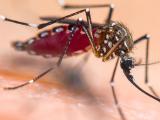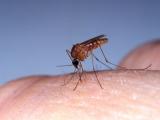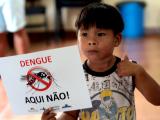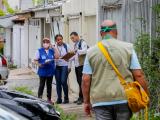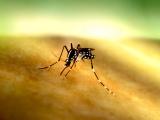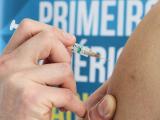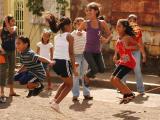From 2010 to 2020, the US territories of Puerto Rico, American Samoa, the US Virgin Islands (USVI), and Guam reported more than 30,000 cases of dengue—about half of which occurred in children and teens aged 10 to 19 years, according to a study today in Morbidity and Mortality Weekly Report (MMWR).
Researchers from the US Centers for Disease Control and Prevention (CDC) reviewed dengue cases reported to the ArboNET arbovirus surveillance system by the four territories from 2010 to 2020.
Dengue is one of the most common mosquito-borne diseases in the world. Caused by a flavivirus spread by Aedes mosquitoes, dengue causes an illness in about 25% of infected people characterized by fever accompanied by nausea, rash, or pain. About 5% of people with symptoms become severely ill and can experience hemorrhage, shock, or severe organ damage.
Infants, older adults, pregnant women, previously infected people, and those with some chronic conditions are at highest risk for severe dengue. There are no antiviral drugs against dengue, and, if left untreated, the infection kills 13% of patients.
Since 2021, the CDC's Advisory Committee on Immunization Practices (ACIP) has recommended the four-strain Dengvaxia vaccine for previously infected children 9 to 16 years old living in dengue-endemic American Samoa, Puerto Rico, and USVI. The vaccine has been shown to lower rates of symptomatic illness, hospitalization, and severe disease.
All deaths occurred in Puerto Rico
The territories reported 30,903 confirmed or probable dengue cases from 2010 to 2020, 96.6% from Puerto Rico, followed by American Samoa (2.1%), USVI (1.1%), and Guam (0.1%). Annual incidence was highest in American Samoa (10.2 cases per 1,000 people in 2017), followed by Puerto Rico (2.9 per 1,000 in 2010), and USVI (1.6 per 1,000 in 2013). The most common viral serotypes in Puerto Rico and USVI were DENV-1 and DENV-4.
Ongoing education about dengue clinical management for health care providers in US territories is important because of the high hospitalization rates reported.
Just over half (50.6%) of cases occurred among people younger than 20 years, and hospitalization rates were high in American Samoa (45.5%), Puerto Rico (32.6%), and Guam (32.1%). About 2% of the dengue cases in Puerto Rico and USVI were considered severe, and all 68 deaths (0.2% of all cases) occurred among Puerto Ricans.
"Children and adolescents aged <20 years were disproportionately affected, highlighting the need for interventions tailored for this population," the study authors wrote. "Ongoing education about dengue clinical management for health care providers in U.S. territories is important because of the high hospitalization rates reported. Dengue case surveillance and serotyping can be used to guide future control and prevention measures in these areas."
They added that new dengue vaccines will likely benefit new population groups in the future.
Reasons for hope
In a related commentary today in JAMA, Alfonso Hernandez-Romieu, MD, MPH; Laura Adams, DVM, MPH; and Gabriela Paz-Bailey, MD, PhD, all of the Centers for Disease Control and Prevention in San Juan, Puerto Rico, said that while urbanization, migration to cities without a reliable water supply or garbage-collection system, climate change, and increased mosquito breeding sites are likely to continue to foster dengue for the foreseeable future, there are reasons for hope.
"Prevaccination screening poses logistic barriers to adoption because it requires multiple health care clinician visits to determine vaccine eligibility and administer 3 doses of the vaccine," Hernandez-Romieu and colleagues wrote. "Despite these barriers, vaccinating 9-year-old children is cost-effective in Puerto Rico and could prevent approximately 3,000 hospitalizations in 10 years."
Other helpful measures, they added, could include physician education on dengue management, particularly in people aged 60 years and older; public awareness of dengue risk factors; regional molecular surveillance; and the deployment of mosquitoes infected with the Wolbachia intracellular bacterium to reduce viral transmission.
"Nevertheless, a concerted effort and dedicated resources to further inform optimal clinical care, maintain multinational surveillance systems, develop new vaccines and vector control methods, and determine optimal implementation will be required to proceed expeditiously," they concluded. "With these efforts, we may finally control dengue."
